Intro
This year, however, the Razr Plus (2025) is not Motorola’s most premium foldable phone. Instead, that role is taken by the new Razr Ultra, which is a closer match to the newly announced Galaxy Z Flip 7 in terms of performance.
So, is the Razr Plus (2025) still be a good alternative to the Z Flip 7? We’ve now carried out our tests on Samsung’s Z Flip 7, and it seems the slightly higher price tag does come with some noteworthy benefits.
Motorola Razr Plus (2025) vs Galaxy Z Flip 7 differences:
| Motorola Razr Plus (2025) | Galaxy Z Flip 7 |
|---|---|
| Snapdragon 8s Gen 3 | Exynos 2500 |
| 12 GB RAM | 12 GB RAM |
| 6.9-inch main display, 165Hz | 6.9-inch main display, 120Hz |
| 4-inch cover screen, 165Hz | 4.1-inch cover screen, 120Hz |
| 50 MP main 50 MP 2x telephoto 32 MP selfie |
50 MP main 12 MP ultra-wide 10 MP selfie |
| 4,000 mAh | 4,300 mAh |
| 45W wired charging 15W wireless |
25W wired charging Supports wireless charging |
| Android 15 4 years OS updates |
Android 16 7 years OS updates |
| Vegan leather w/stitching wood finish options |
Glass back Gorilla Glass Victus 2 |
| IP48 | IP48 |
| $1,000 | $1,099 |
Table of Contents:
Design and Display Quality
Motorola shines with its style, Samsung refines its build
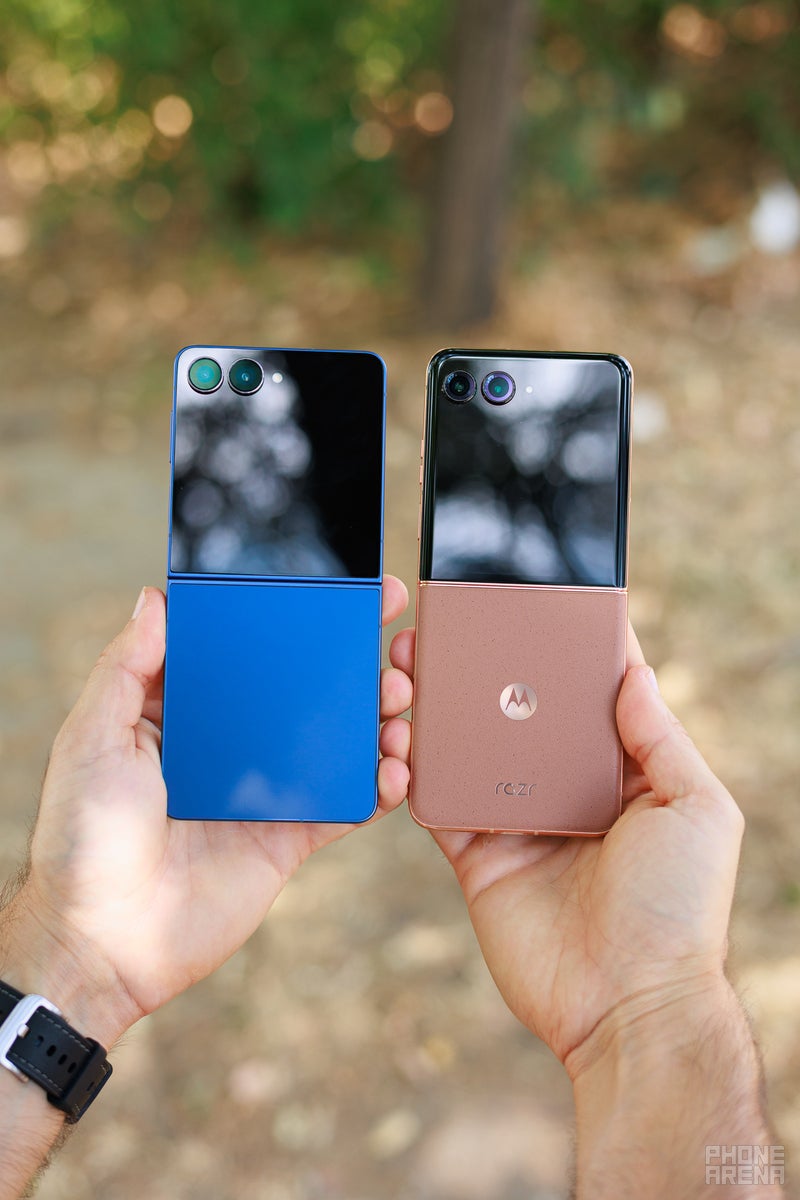
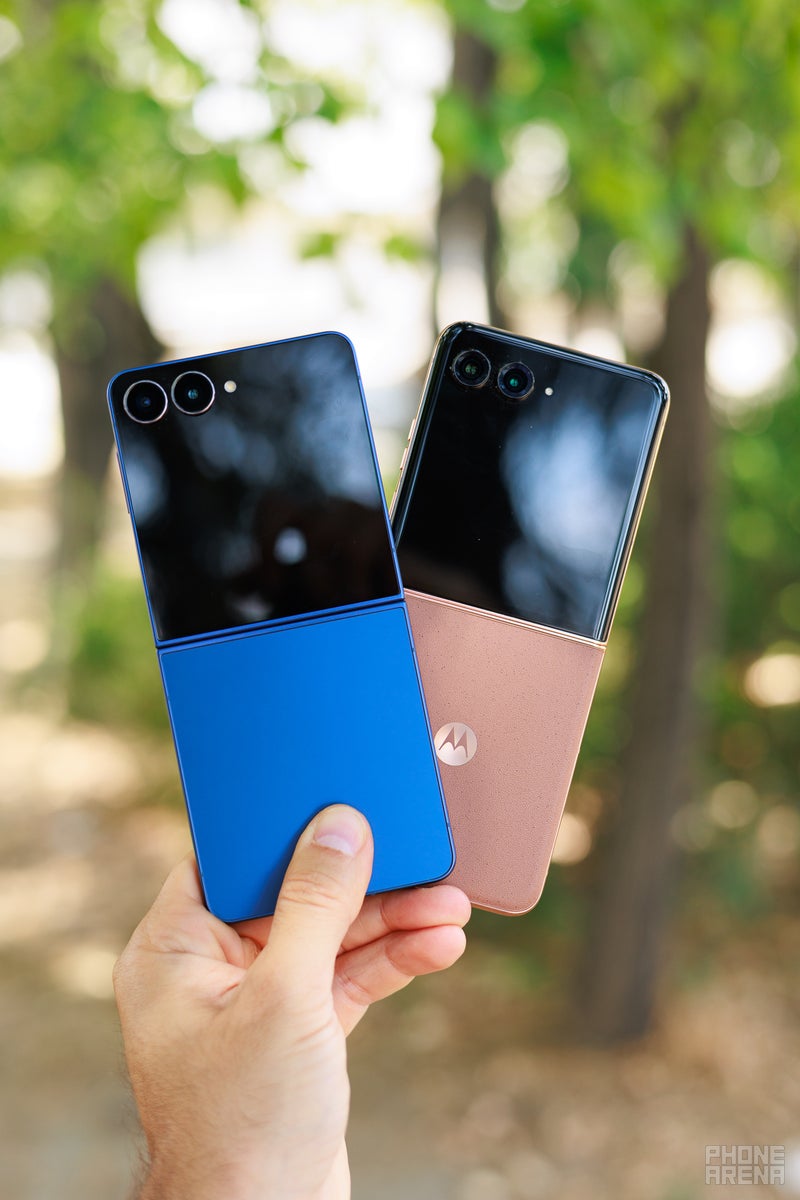
The Razr Plus (2025) sticks to its fashionable roots with a leather-inspired finish in three standout colors: Midnight Blue, Hot Pink, and Pantone’s 2025 Color of the Year — Mocha Mousse. It remains lightweight, slim, and soft to the touch.
Samsung’s Galaxy Z Flip 7, on the other hand, keeps its premium aluminum and glass build but makes a series of important refinements. It maintains the same IP48 durability rating as last year, but now adds a new layer structure to the Ultra Thin Glass (UTG) of the main display.
Samsung said the layering improves shock dispersion and makes the crease less visible, and now that we’ve had ample time with the small foldable — we can confirm that the crease is much less noticeable.
In terms of looks, Samsung has reduced bezel thickness and made the phone’s profile flatter and more compact. And even though the overall shape remains familiar, the Z Flip 7 now looks more refined than ever.
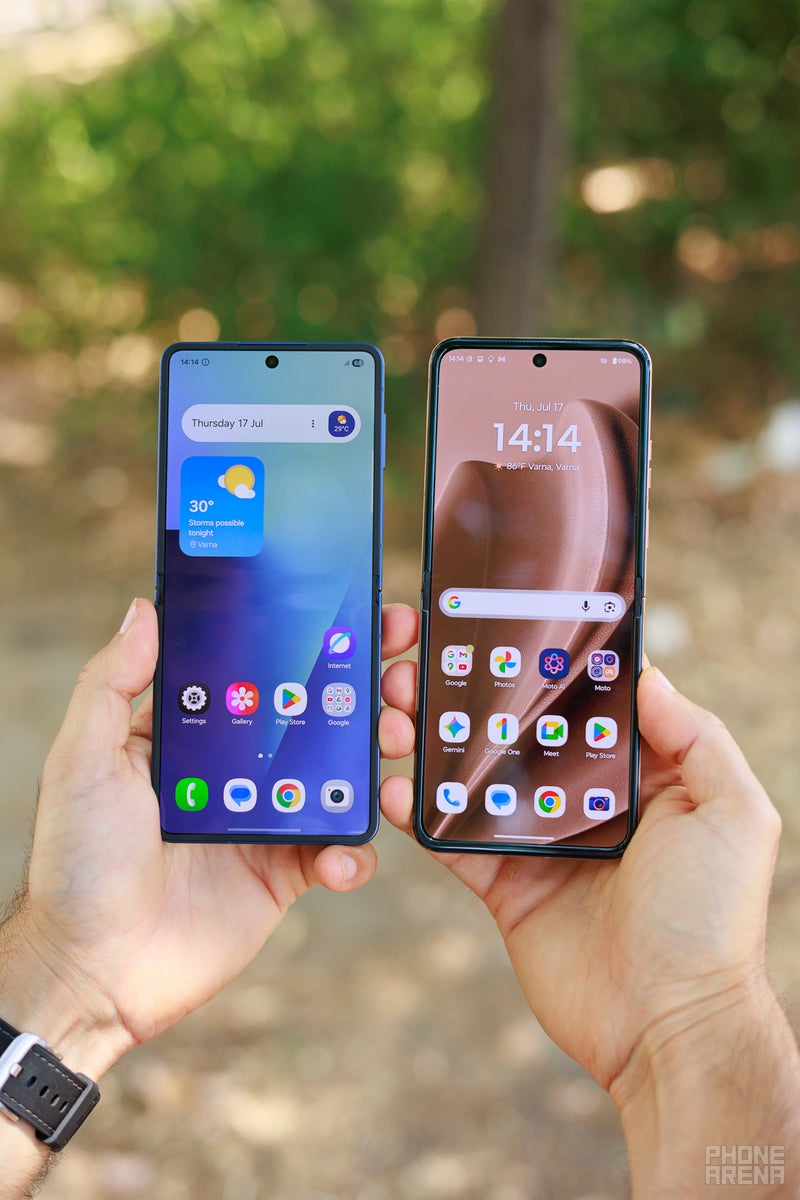
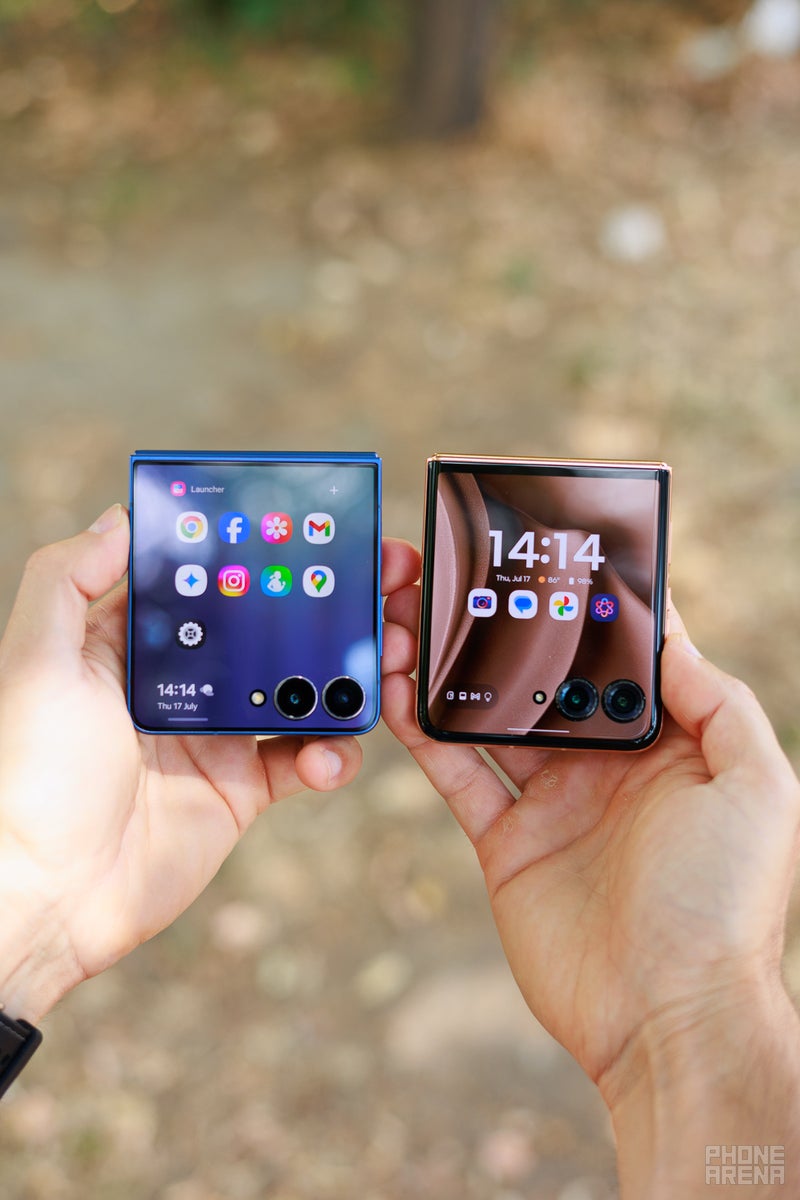
Our tests showed that the Z Flip 7 is leagues ahead of the Razr Plus as far as brightness is concerned, with a difference of 550 nits at 20% APL, which is around the expected Average Picture Level in most cases. The difference is also clear when using the phones.
- Next Move – context-aware suggestions based on what’s on screen
- Playlist Studio & Image Studio – create themed playlists and visuals
- Catch Me Up – summarizes missed notifications
- Pay Attention – transcribes audio
- Smart Connect – mirror content to TVs and PCs via voice/text
Both phones have a 6.9-inch internal display with HDR10+ support, but the Razr uses a 165Hz pOLED panel while the Z Flip 7 sticks to a 120Hz AMOLED one. Samsung’s folding crease is now much less thanks to a new Ultra Thin Glass layer with improved shock dispersion, matching the Razr.
Performance and Software
Mid-range Snapdragon vs flagship Exynos
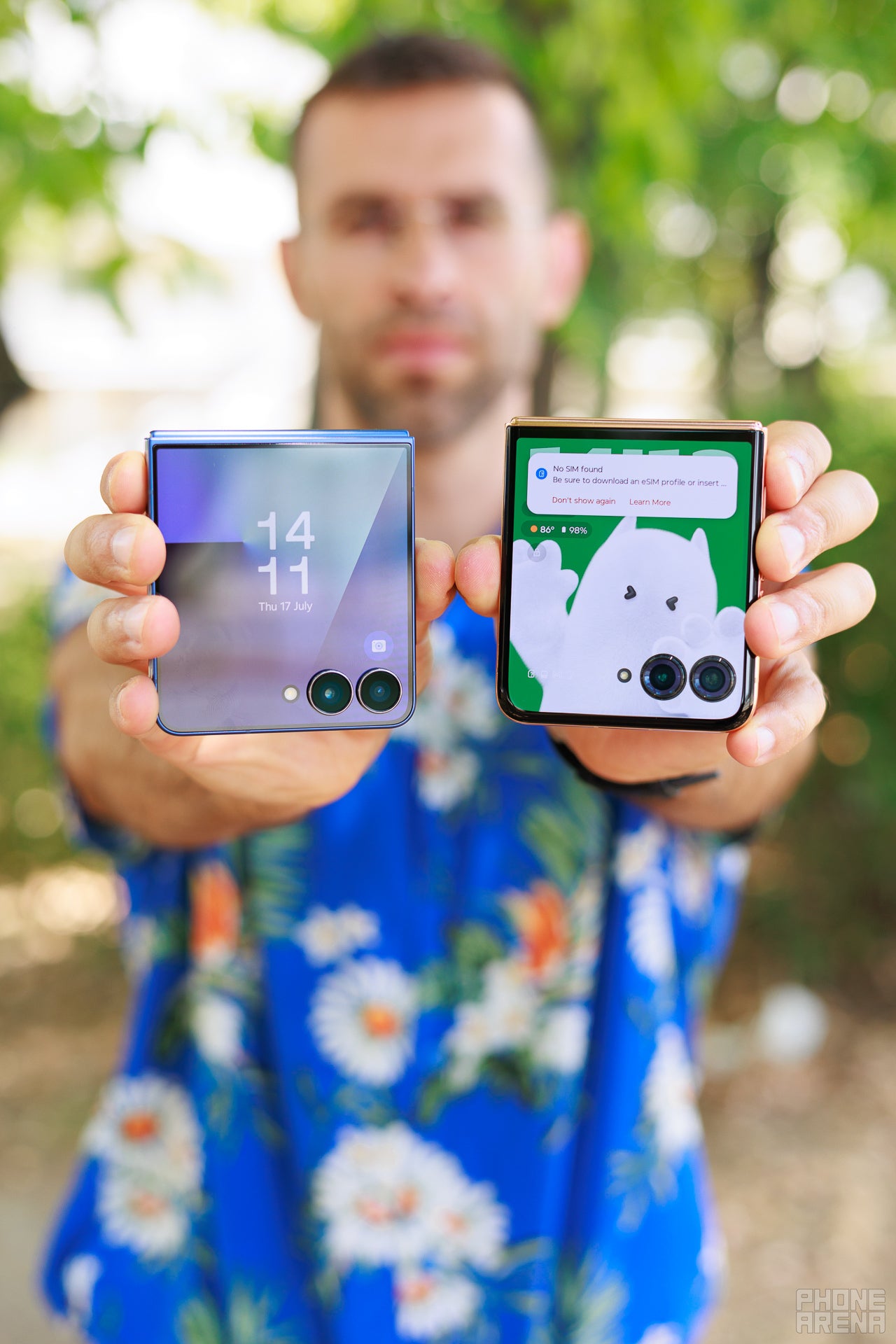
The Razr Plus (2025) reuses the same chip as last year — solid, but not flagship-grade. | Image credit — PhoneArena
Samsung, on the other hand, is using the new Exynos 2500 chip inside the Galaxy Z Flip 7. This marks the return of Samsung’s in-house silicon to foldables and introduces its first 3nm processor, with improvements in AI processing and power efficiency.
CPU Performance Benchmarks:
The Z Flip 7 was especially dominant when it came to multi-care CPU performance, but also in the single-core benchmarks we performed. In other words, you can rely on it to carry out tasks faster, like when you are using demanding apps like photo and video editors.
GPU Performance Benchmarks:
The gap in GPU performance between the two phones is also pretty obvious. The Exynos 2500 is much more capable, and handles gaming and graphically-intensive tasks faster.
One major advantage for Samsung is software support: the Z Flip 7 gets 7 years of OS and security updates, compared to 4 years promised for the Razr Plus (2025). If long-term value is important to you, Samsung is definitely the way to go.
Camera
Motorola still lacks an ultra-wide lens
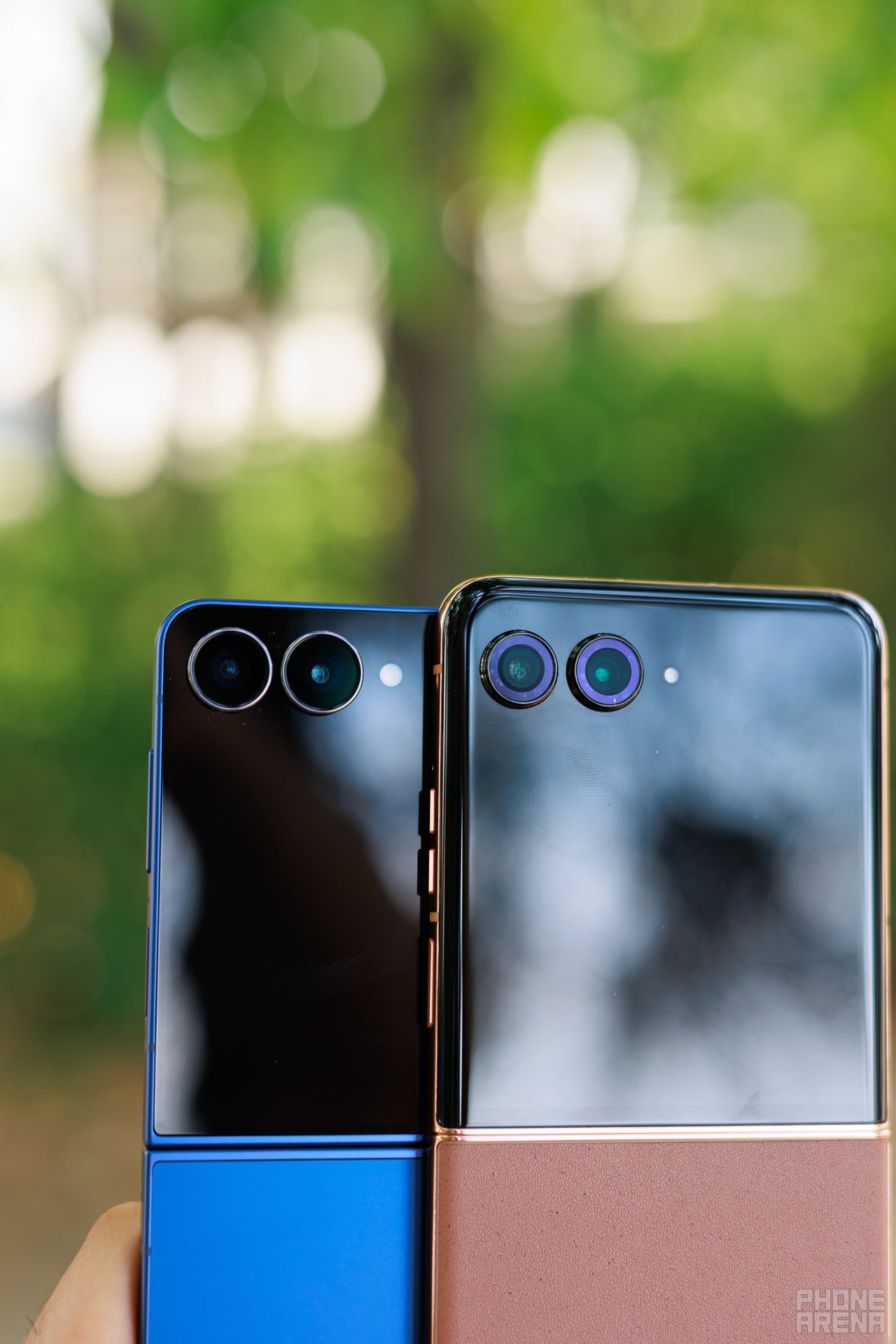
The Razr Plus (2025) skips an ultra-wide lens again. | Image credit — PhoneArena
The Razr Plus (2025) sticks with a dual-camera setup that features a 50 MP main camera and a 50 MP 2x telephoto lens, along with a high-resolution 32 MP selfie camera. To make the camera experience better, Motorola has leaned on Moto AI for auto photo enhancements and new features like Action Shot, Group Shot, and Air Gesture.
The Galaxy Z Flip 7 keeps the 50 MP main sensor and a 12 MP ultra-wide camera. Selfies are handled by a 10 MP front camera, and while the resolution is lower, Samsung’s processing still offers competitive results.
The Flip 7 also gets AI-powered photo editing, including Generative Edit and Suggestion tools built directly into the gallery app.
Just like its predecessor, the Razr Plus is being set back for its lack of a dedicated ultra-wide camera. The main camera, however, performs similarly to that of the Z Flip 7. That said, the Galaxy does a much better job at recording video when using the main camera.
Main Camera
There’s a big difference in the field of view (FOV) of these two main cameras. The Z flip captures way more in one shot, but I much prefer the way the Razr has processed the image — showing more from the shadowy areas.
Again, the Razr seems to have captured more light in this low-light scenario. It also seems to me like it has better sharpenss.
Zoom Quality
3x zoom is not the native zoom range of the Razr Plus (2025), 2x is. But even beyond its optical zoom, it is clear that it has taken a much better photo here. There is much more detail and the colors look natural, as opposed to the soft image of the Z Flip 7, which also has weird-looking colors.
Ultra-wide Camera
The Razr doesn’t have an ultra-wide, so there are no images to compare here, but here’s what the Z Flip 7 can do:
Selfies
When it comes to the selfies, the Flip 7 offers a clearer image with better colors. The Razr Plus is not bad at all, though, and I like that it has blurred out the background a bit.
More Camera Samples
Video Quality

Things get flipped when taking a look at the video capabilities of these two phones. The postprocessing on the Z Flip 7 is significantly better compared to the washed out recording that the Razr Plus takes. Stabilization on the Z Flip also seems to be a tad better, but not by a significant margin.
Battery Life and Charging
The Z Flip 7 lasts a little longer
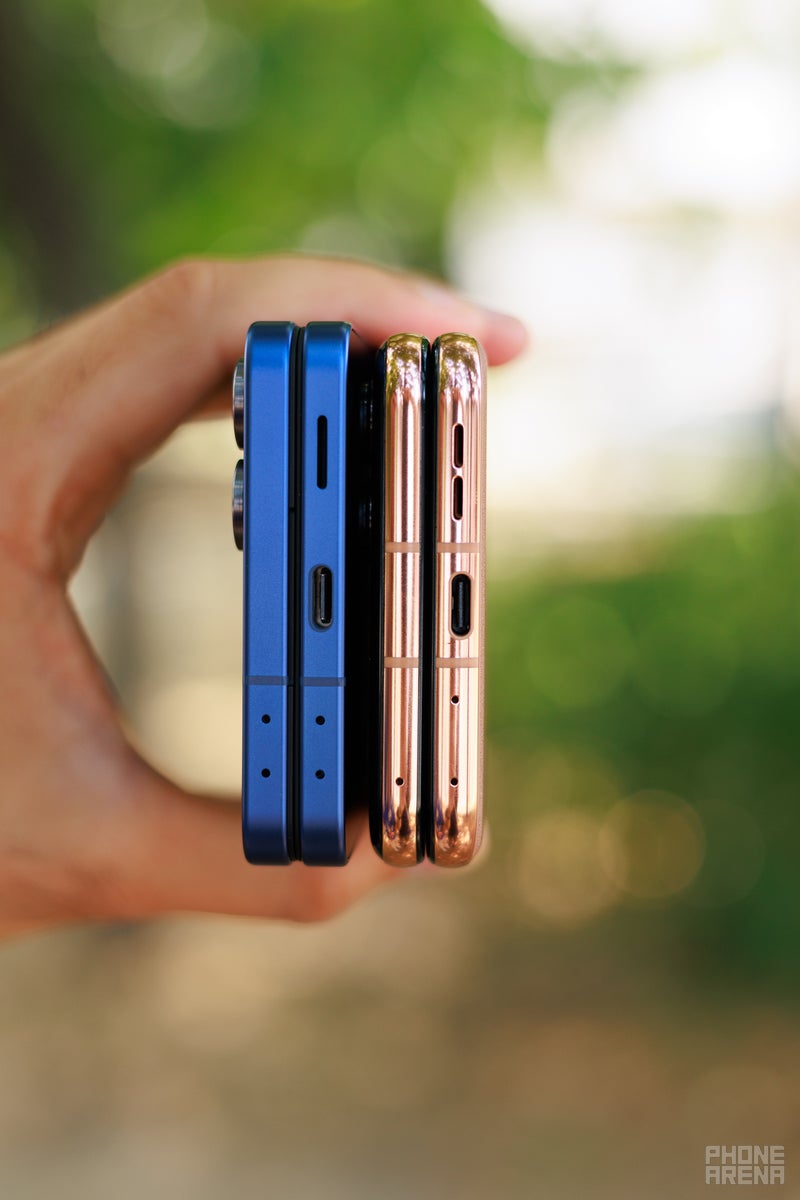
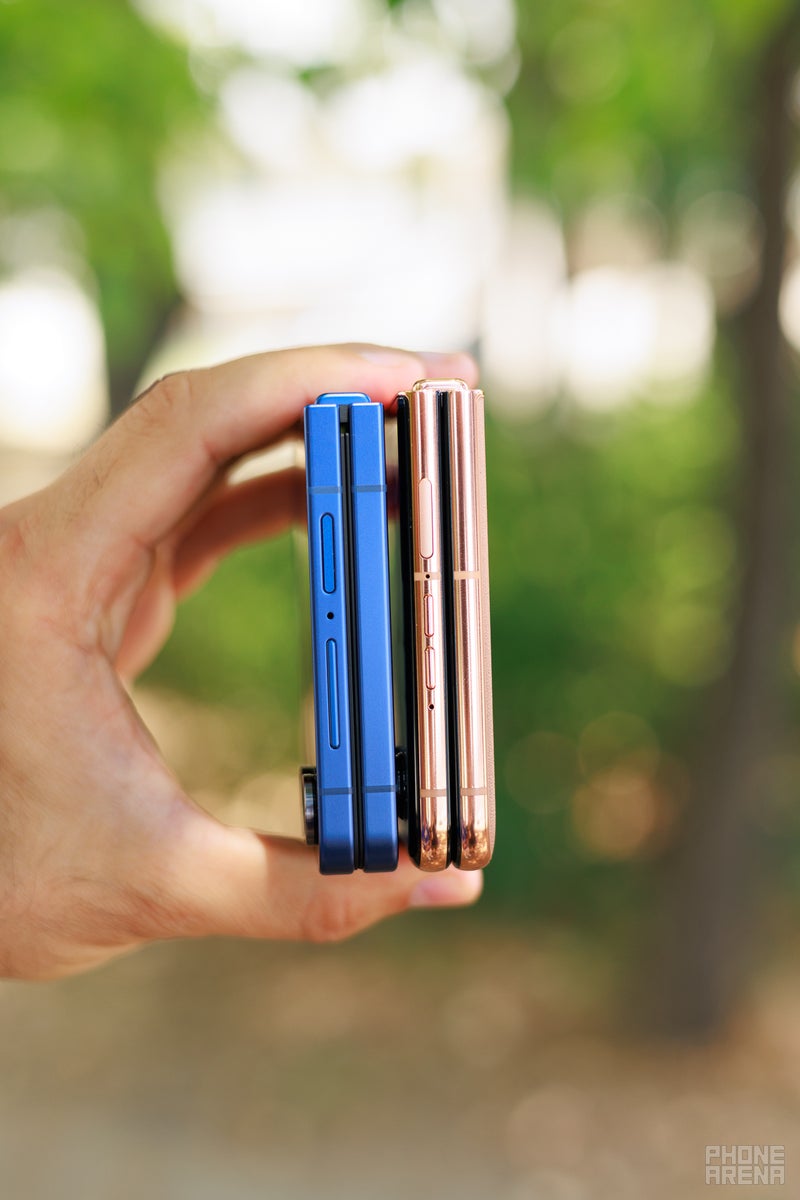
The Z Flip 7 has a slightly larger 4,300 mAh battery vs the 4,000 mAh one in the Razr Plus (2024), which is probably why it also showcased better battery life during our tests.
As for charging, Samsung remains more conservative with its 25W wired charging (0–43% in 30 minutes) compared to Motorola’s blazing-fast 45W charging (62% in 30 minutes). Both support wireless charging and reverse wireless charging.
PhoneArena Battery and Charging Test Results:
The Z Flip 7 got a better estimated battery life in our battery scoring system. It mainly pulled ahead in our Browsing test, but the two were somewhat matched when it came to our Video Streaming and Gaming tests. Probably more important is the fact that it took us more than 30 minutes more to charge the Flip 7 from 0-100%.
Specs Comparison
| Motorola Razr Plus (2025) | Galaxy Z Flip 7 specs |
|---|---|
| Size, weight 171.4 x 74 x 7.1 mm 189 g |
Size, weight 166.7 x 75.2 x 6.5mm 188 g |
| Screen 6.9″ main display 165Hz refresh rate 4″ cover display 165Hz refresh rate |
Screen 6.9″ main display 120Hz refresh rate 4.1″ cover display 120Hz refresh rate |
| Processor Snapdragon 8s Gen 3 3nm |
Processor Exynos 2500 4nm |
| Versions: 12/256 GB |
Versions: 12/256 GB 12/512 GB |
| Cameras: 50 MP main 50 MP 2x zoom 32 MP front |
Cameras: 50 MP main 12 MP ultra 10 MP front |
| Battery: 4000 mAh |
Battery: 4300 mAh |
| Charging: USB-C 45W wired 15W wireless |
Charging: USB-C 25W wired 15W wireless |
Summary
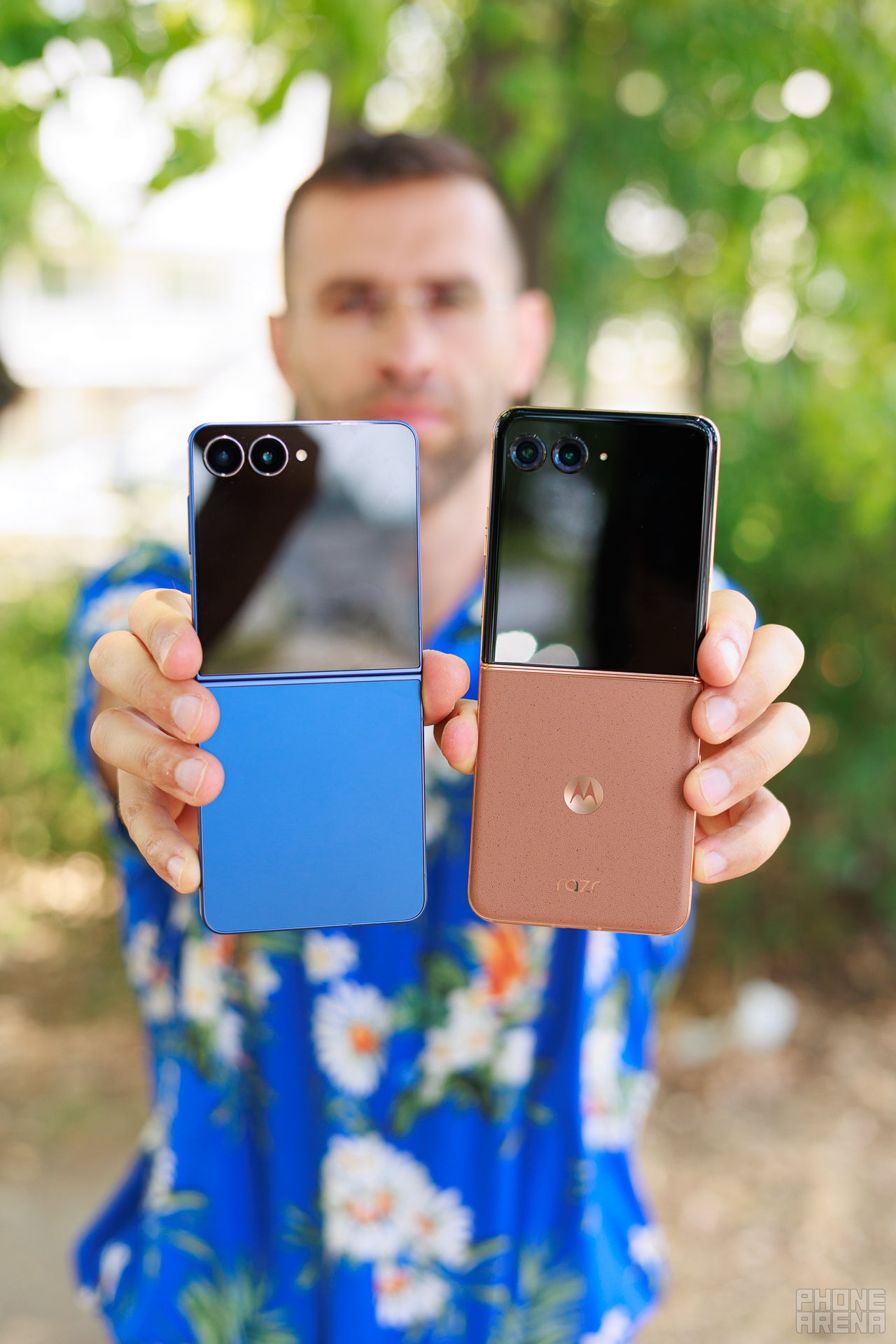
The Z Flip 7 brings better performance, a bigger screen, and longer support for just $100 more. | Image credit — PhoneArena
The Galaxy Z Flip 7 brings meaningful upgrades that address last year’s pain points. It’s ships with Samsung’s new Exynos 2500 processor — a 3nm chip designed to unlock faster AI performance and better power efficiency. It also finally matches the Razr with its larger 6.9-inch inner screen and the new 4-inch cover display.
Motorola’s lean software and faster charging make the Razr Plus a strong case, especially if you’re not after flagship-level performance or extremely long software support. If you don’t mind the telephoto camera that replaces the ultra-wide one, i’s okay, but for just a hundred bucks more you get a much better experience with the Z Flip 7.
